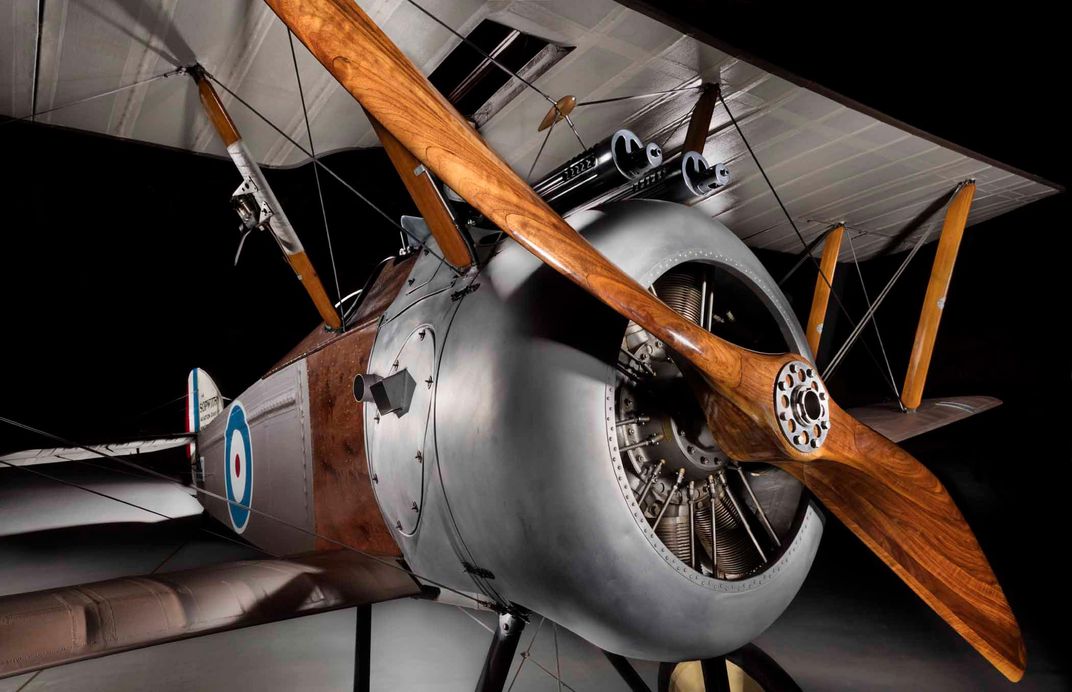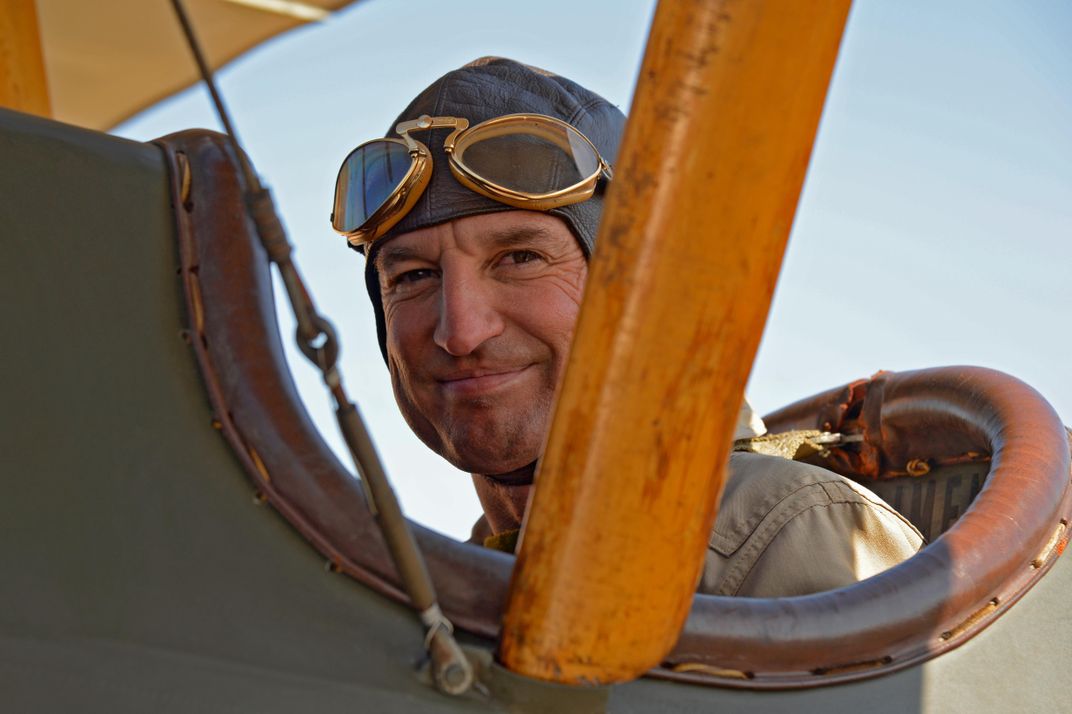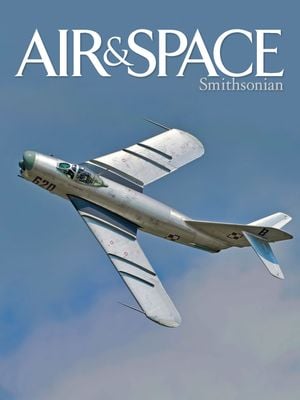Javier Arango’s Extraordinary Gifts
Two recent arrivals to the National Air and Space Museum.
Nestled among the pre-1920 aircraft at the Smithsonian National Air and Space Museum’s Steven F. Udvar-Hazy Center are two recent arrivals, donated by the late Javier Arango. Unlike their heavy metal neighbors, they’re small, fabric-covered airplanes from 100 years ago and more. Each is an icon of early flight—a Blériot XI, from the years before World War I; and a Sopwith Camel, perhaps the most famous fighter of the war.
Arango, a scholar of World War I aviation, had amassed one of the world’s finest collections. A board member and donor to the Museum, he had recently sponsored its World War I centennial programs, including an art exhibit, concerts, family days, and a film festival. Arango died last April. His final gifts to the American people were the impeccably restored Camel and Blériot. Even in Arango’s exemplary collection, these two are unique.
After the Wright Flyers of 1903-1908, the Blériot XI is arguably the most pivotal aircraft of the pre-World War I period. Louis Blériot stunned the world with his flight across the English Channel on July 25, 1909. Almost alone among early flying machines, the design presages the modern airplane: a single wing on a slender fuselage, with stabilizer and rudder in the rear, engine and propeller in the front. It was built and flown by pioneers in Europe, the Americas, Asia, and Africa. It performed the first loop. It was the primary trainer of French pilots in World War I.
But the Blériot that Arango donated is not just any Blériot. It’s known as the VanDersarl Blériot, named for the two brothers from Colorado who built it between 1909 and 1911. It’s a flying time capsule from a unique period in early aviation. “[It represents] that next level of people below the Wrights, Curtiss, Blériot, Farman—the hundreds and hundreds of people who were just building airplanes out of the local hardware store in the back yard,” says Museum chief curator Peter Jakab. “Many of them were copies of the well-known airplanes.”
But even among those early homebuilders, Frank and Jules VanDersarl were unusual. “They were teenagers!” exclaims Jakab. “They decided they were going to build an airplane, and they built their Blériot from plans.” It’s possible that they used the plans published in the 1909-1911 issues of Aeronautics magazine.
The brothers also designed and built the engine. “It’s a classic case of, ‘We didn’t know it was impossible, so that’s why we did it.’ And then they taught themselves to fly.” Jules made the first flight on June 10, 1911.
Jules VanDersarl eventually left aviation, but Frank remained involved until the Great Depression, and eventually became a machinist in Denver. Their Blériot languished in storage until the 1960s, when Frank and another brother, John, began a restoration that was never finished. The airplane made its way to an Italian owner, and Arango acquired the aircraft in 2008.
According to Jakab, Arango originally wanted to restore the airplane to resemble a factory-built Blériot. But the VanDersarl design had several modifications the brothers made in their home-brewed version. There’s an improvised version of the Blériot cloche—the mechanism for the stick’s control of wing-warping and elevator; they had to arch the wooden beam at the very front of the airplane to accommodate their home-built engine. “I convinced him not to [change the airplane],” says Jakab. “There’s a number of original factory built Blériots out there.” Arango later told Jakab he was very glad he’d kept it as it had been built.
The airframe is the original structure the VanDersarls built, though the wings eventually deteriorated and were replaced. “The engine disappeared at some point,” Jakab says. The current engine is a copy that Arango’s longtime friend, mechanic, and fellow pilot Chuck Wentworth built from a few sketchy notes and photographs and data.
Arango first flew the Blériot on November 3, 2011. In a book he wrote about it, he commented, “A Blériot does not take off. It levitates.”
* * *
The Sopwith Camel endures in the popular imagination as the iconic adversary of Manfred von Richthofen’s Fokker triplane. Named for its distinctive hump housing the machine guns behind the cowling, the Camel was not the fastest fighter, but could out turn and out climb almost anything in the sky. Arango said it was challenging to learn to fly—especially when it leaps into the air on takeoff—echoing the testimonials of many fledgling British fighter pilots.
But as with the Blériot, the Sopwith Camel that Arango donated is no ordinary Camel. “It is the best Camel in existence,” says Jakab. Of the six or seven other survivors, the Arango Camel is the only one to come directly from the Sopwith factory. “It’s the most complete,” says Jakab. “It has the proper Clerget engine.” And it actually went to the Front during the war—but not for long.
On June 28, 1918, the Camel was sent to No. 10 Squadron of the Royal Naval Air Service, stationed at Droglandt. Even for the typically brief careers of World War I aircraft and pilots, its tour was short. “Two days,” says Jakab. The airplane was assigned to Flight Sub-Lieutenant Charles Edgar Bramhall, who wrecked it in a hard landing the day after it arrived. After being repaired, the Camel served as a training machine back in England (where it was wrecked and repaired again). The airplane was flown by barnstormers in Britain, went through several owners, and eventually settled at the Shuttleworth collection. Arango bought the aircraft from an American owner in 2005.
The airplanes arrived in October 2017, an enduring tribute to Arango’s passion for understanding and preserving the history of early flight.


/https://tf-cmsv2-smithsonianmag-media.s3.amazonaws.com/filer/d4/ec/d4ec3a41-e773-44d7-8b35-3755eb83a81f/16d_on2018_page113_dec_bleriot_live.jpg)
